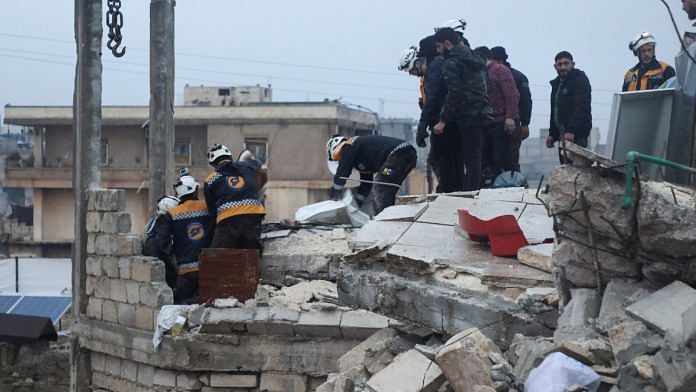New Delhi: Two big earthquakes — one of magnitude 7.8 and another 7.6 — devastated large swathes in Turkey and Syria on Monday, killing at least 1,400 people and leaving thousands other injured. Experts said the killer Alpide Belt has once again taken a toll in the region, which has been hit by many deadly temblors in the past.
So, what is the Alpide Belt?
Turkey sits on a hotbed of seismic activity known as the Albide Belt — the second most active region on Earth after the Pacific Ring of Fire.
The Alpide Belt spans over 15,000 km, roughly following the boundary of the Eurasian and African tectonic plates. It extends from the Himalayas in the east, through the Mediterranean region and across to the Azores in the Atlantic Ocean. Tectonic plates are formations of the Earth’s crust that move slowly, often creating pressure and friction between each other.
This belt experiences a high frequency of earthquakes and volcanic eruptions. This is primarily due to the collision of the Eurasian and African tectonic plates, which drag along and cause a build-up of immense pressure.
This slow-building pressure eventually gets released through earthquakes and volcanic activity.
This Alpide Belt accounts for about 17% of the world’s big earthquakes so far, according to United States Geological Survey. These earthquakes include some of the most destructive ones such as the Iran temblor that took 11,000 lives in August 1968, and the Turkey tremors in March 1970 and May 1971 that killed about 1,000 people each, according to the countries records. All were near magnitude 7, USGS archives show.
The Alpide Belt is home to many mountain ranges, the most significant being the Himalayas and the Alps. The Himalayan zone is prone to intense and high-frequency earthquakes because of active tectonic plate friction.
Scientists say there is a strong possibility of a major earthquake in the Himalayan region.
The Alpide Belt is divided into several segments, each with its own unique geological characteristics and history of seismic activity.
For example, the Mediterranean region of the Alpide Belt is known for its complex network of fault lines and the occurrence of large earthquakes, according to a paper published in the Geophysical Journal International. Turkey has seen major earthquakes in 1866, 1896, 1930, 1943, 1944 and 1970.
The alignment of many convergent boundaries from east to west was first noticed by Austrian geologist Eduard Suess. The existence of the belt hinted that the many tectonic plates on Earth were all once a part of a single plate.
Suess called the single continent Gondwana, named after some rock formations in India.
One of the deadliest natural disasters in history — the 2004 Indian Ocean earthquake, which led to a massive tsunami that killed about 200,000 people — fell within this belt.
(Edited by Nisheeth Upadhyay)
Also Read: Visuals show scale of devastation in earthquake-hit Turkey. Rows of rubble, frantic rescue ops



